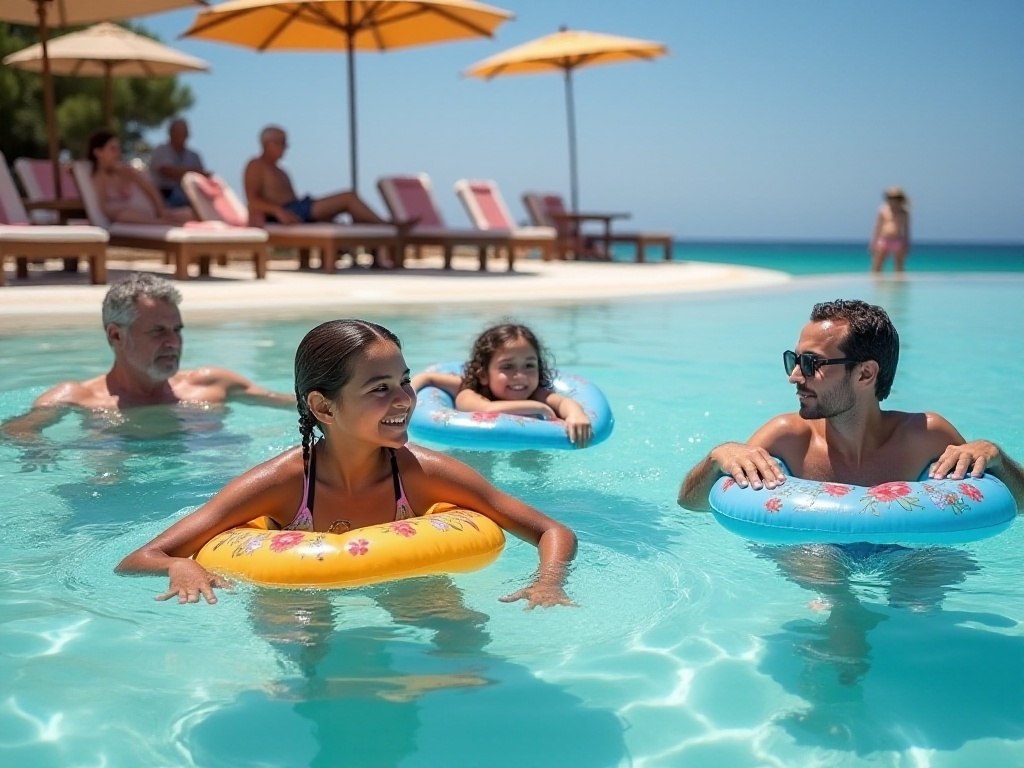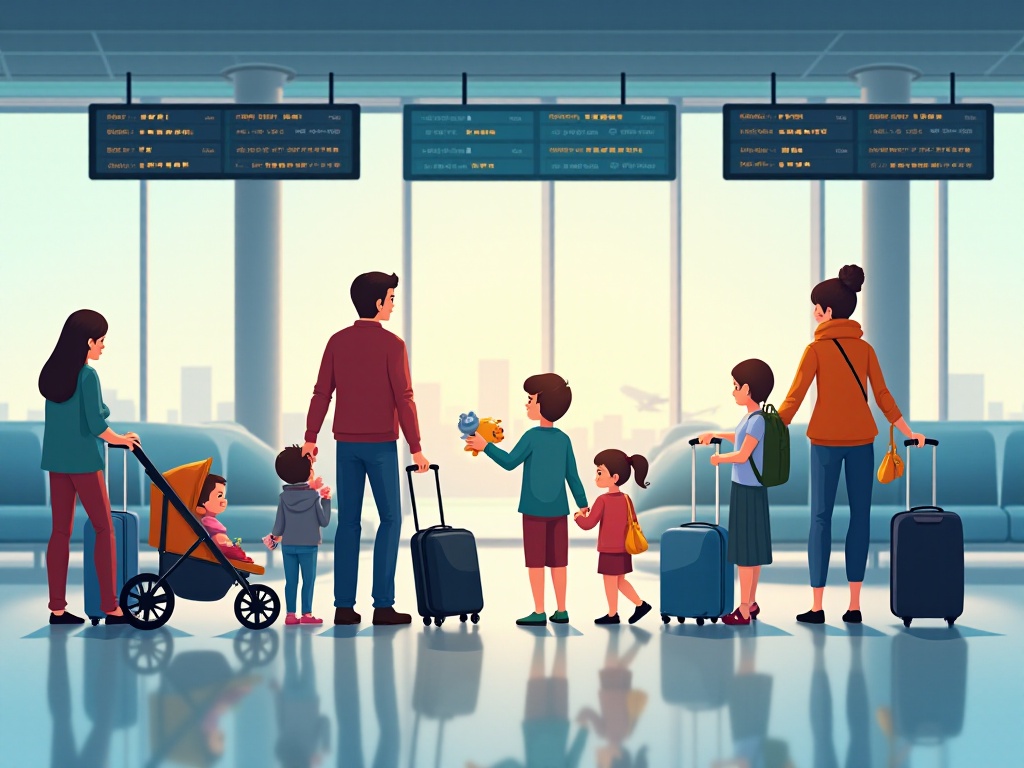Why Travel with Children
Many parents today are reluctant to travel with their children, especially after seeing social media posts about troublesome family trips. However, avoiding travel with children due to fear of difficulties means missing out on precious family bonding time.
As an aunt who loves traveling, I frequently take my nieces and nephews on trips. I recently took my 8-year-old niece to Yunnan, and the experiences along the way left a deep impression on me. In a small courtyard in Lijiang Ancient Town, my niece excitedly pointed to Yi ethnic costumes on the wall, vividly explaining the characteristics and uses of each garment. Seeing the curiosity and thirst for knowledge sparkling in her eyes reinforced my determination to continue taking children to explore the world.
From a professional perspective, family travel clearly promotes parent-child relationships. A longitudinal study published in the "Child Development" journal in 2023 showed that children who frequently travel with family not only excel in social skills but also generally score 15-20% higher academically than their peers. The reason is simple: during travel, parents and children have more opportunities for deep interaction, facing challenges and sharing joy together. These experiences are far more profound than ordinary daily communication.
For example, when I took my nephew to Beijing last summer, we encountered a sudden downpour. While waiting for the rain to stop, we observed the ripples formed by raindrops hitting the ground, chatted and laughed, and even spontaneously created a nursery rhyme about rainy days. Such experiences helped my usually introverted nephew become more outgoing and strengthened our emotional bond.
For Infants
Many new parents might think traveling with infants is an impossible task. However, with the right methods, traveling with 0-3 year-olds can be quite manageable.
Choosing the destination is crucial. According to childcare experts, the first trip with an infant should ideally be to a location not too far from home, preferably within a 2-hour drive. This has many benefits: first, you can adjust plans and return if the baby doesn't adapt well; second, short trips help babies gradually adjust to environmental changes; most importantly, such distances won't overly fatigue the baby from long journeys.
Regarding packing, I strongly recommend creating a detailed Excel checklist. From multiple experiences traveling with children, I've found the "five essentials" principle particularly useful. First is diapers - pack 50% more than usual, as travel may affect the baby's toileting habits. Second is formula, best divided into single-serving portions for hygiene and convenience. Third is common medications, including fever reducers and digestive aids, as buying medicine while traveling can be troublesome. Fourth is spare clothes, at least two sets for emergencies. Finally, the baby's favorite toys, which help provide security in unfamiliar environments.
During actual travel, I've found timing control is also important. Infants have fixed schedules, so it's best to plan itineraries around the baby's routine. For example, schedule sightseeing during morning hours when babies are most energetic, and plan nap times in the car or hotel.
Additionally, accommodation choice needs special attention. I recommend hotels with complete facilities and quiet environments, preferably offering cribs. If budget allows, choose suites with kitchens so you can prepare baby meals. In my experience, many hotels offer special infant services like sterilizers and bottle warmers - communicating with hotels in advance is essential.

For Preschoolers
Children aged 3-6 are indeed the most challenging age group to travel with, but they're also the most interesting. They're full of curiosity, wanting to know the "why" of everything. While this can sometimes overwhelm adults, it's actually the perfect opportunity for educational fun.
According to child psychology research, 4-year-olds ask questions approximately every 15 minutes. Rather than being annoyed by these questions, transform them into learning opportunities. I often design travel as a large exploration game, letting children learn new knowledge through play.
Taking my experience of bringing my 5-year-old nephew to Beijing as an example, I specially prepared a "Beijing Adventure Passport." This passport not only included stamps from various attractions but also came with simple tasks. For instance, finding three different dragon patterns in the Forbidden City, or counting steps climbed on the Great Wall. These small tasks made potentially boring visits interesting, and children unconsciously learned much historical and cultural knowledge while completing them.
Regarding itinerary planning, children of this age need special attention to balance between activity and rest. I usually follow a "2-1-2" pattern: 2 hours of activity in the morning, 1 hour of rest at noon, and 2 more hours of activity in the afternoon. This rhythm prevents children from getting too tired while maintaining their interest.
Meals also need special attention. Preschoolers often have fixed eating habits and may resist new foods. My experience is to carry some of their favorite snacks, and when trying local cuisine, follow the "one old, one new" principle: each meal includes both familiar food and something new to try. This ensures children eat enough while gradually developing courage to try new things.
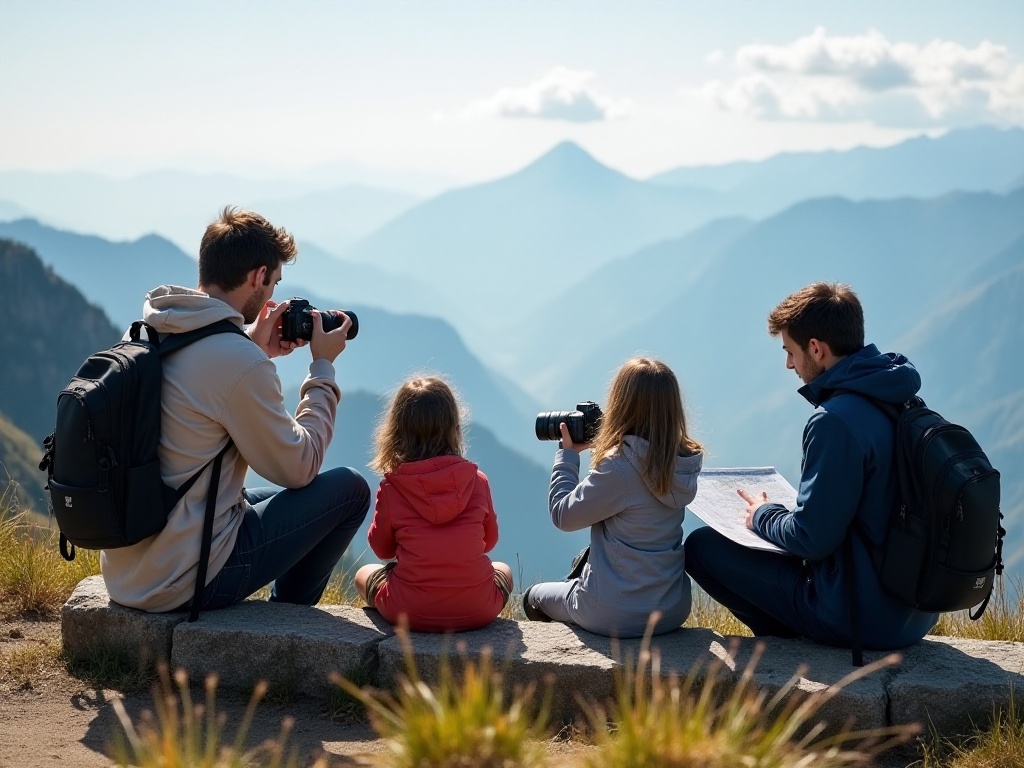
For School-Age Children
Ages 6-12 are truly the golden period for traveling with children. Children this age have basic self-care abilities, can understand and follow simple rules, and most importantly, they have a strong curiosity and desire to explore the world.
Involving children in travel planning is very important. According to a survey of 1,000 families, involving children in planning not only increases travel satisfaction but also develops their decision-making abilities and sense of responsibility. Specifically, I involve children in three aspects of decision-making: attraction selection, food exploration, and itinerary planning.
For attraction selection, I provide 3-4 options, each with simple descriptions and pictures. For example, in Xi'an, I let children choose between the Terracotta Warriors, Big Wild Goose Pagoda, City Wall, and Muslim Quarter. Interestingly, children often choose attractions where they can be physically active, like the City Wall where they can ride bikes.
Maintaining children's interest during travel is also important. Research shows that elementary school students can concentrate for about 2 hours on average, requiring appropriate changes after this time. My go-to "lifesavers" include simple guessing games like "I Spy" and counting games. These games not only pass time but also train children's observation and thinking skills.
Additionally, children this age begin developing their own interests, and special itineraries can be designed around these interests. For example, if a child is interested in history, they can play tour guide at historical sites; if they like photography, they can be responsible for documenting memorable moments of the trip. Such personalized arrangements make travel more meaningful.
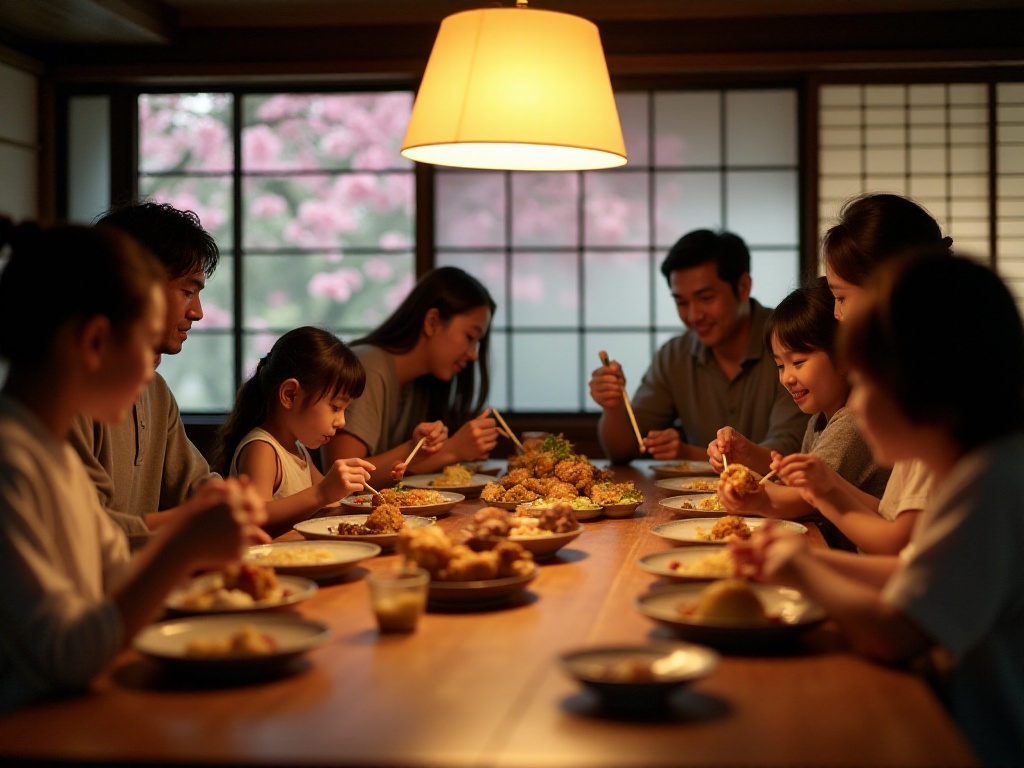
Itinerary Planning
Regarding itinerary planning, many parents commonly make one mistake: trying to pack too many attractions into limited time. Experience shows this often backfires, exhausting adults and leaving children unable to fully enjoy themselves.
According to tourism psychology research, the optimal visiting time for an attraction is 2-3 hours. Beyond this time, both adults and children's attention significantly decreases. Therefore, I recommend planning maximum 2 main attractions per day, leaving adequate time for rest and flexibility.
Here's a practical time allocation template: depart at 9 AM, visit the first attraction until 11:30 AM, then find a comfortable place for lunch and rest, start visiting the second attraction at 2 PM, and end the day around 5 PM. This pace isn't too rushed while ensuring sufficient sightseeing time.
In choosing attractions, pay special attention to balancing active and quiet activities. For example, morning visits to museums requiring quiet observation, followed by afternoon visits to parks or playgrounds where children can move freely. This combination helps children maintain interest and energy throughout the day.
Also, pay special attention to weather factors. I habitually start monitoring destination weather forecasts a week ahead and prepare contingency plans. For example, research indoor attractions for rainy days; avoid outdoor activities during midday heat.
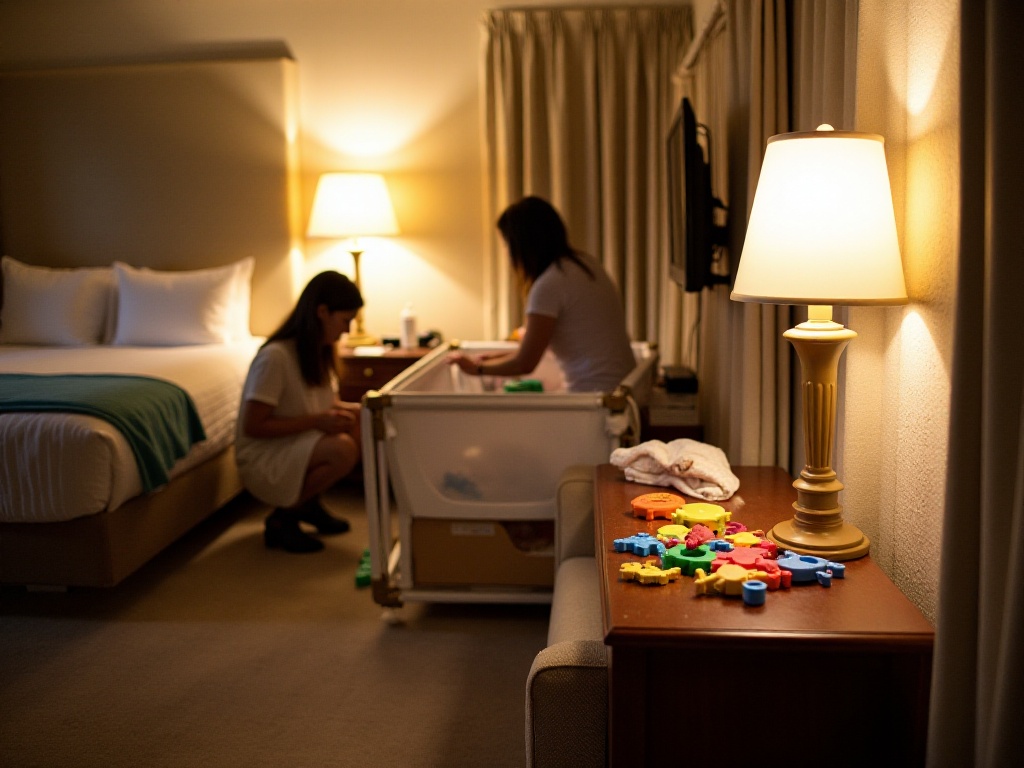
Emergency Plans
Regarding emergency plans, many parents have a misconception: thinking nothing will go wrong, or dealing with problems as they arise. However, this mindset often leads to avoidable troubles.
First, let's talk about preparing an emergency kit. Besides basic medicines, band-aids, sunscreen, and insect repellent, I recommend adding these items: disposable raincoats, portable power banks, simple snacks, wet wipes, and a set of spare clothes. These seemingly ordinary items can be crucial in emergency situations.
Regarding medical supplies, besides common cold medicine, digestive medicine, and band-aids, consider preparing some special medications. For example, if your child has allergies, definitely bring corresponding medicines; if visiting high-altitude areas, prepare altitude sickness medication. It's best to photograph these medicines' instructions and save them on your phone for reference when needed.
Preparing contact information is also important. Besides saving important phone numbers in your phone, I prepare a "contact card" for children with parents' phone numbers, hotel addresses, etc. Although phones are convenient now, this card can be crucial if the phone dies or has no signal.
Additionally, I recommend basic safety education before departure. Tell children what to do in crowded places, what to do if separated, how to respond to strangers' approaches, etc. This knowledge may seem simple but could be crucial in critical moments.

Preserving Memories
Travel's significance lies not only in immediate experiences but also in creating lifelong memorable moments. How to make these precious memories more profound and lasting deserves special attention.
I suggest starting to record during the journey. Have children prepare a travel diary, spending 10 minutes before bed writing about the day's most interesting events. For younger children, drawing or using stickers works well. This not only develops children's expression abilities but also makes memories more vivid.
Photo organization is also important. While smartphone photography is convenient, often resulting in hundreds of photos, without timely organization, these photos might be forgotten in phones. My approach is spending some time each evening with children selecting favorite photos from the day, organizing them briefly, and discussing why we like these photos.
After returning home, create a travel album with children. Many convenient online tools exist for making photo albums, allowing text additions and beautiful layouts. During creation, children often recall many travel details, making memories more profound.
Additionally, collect physical souvenirs. Items like tickets, train passes, and local specialties. These physical items often trigger more memories and provide tangible takeaways for children.
Finally, suggest organizing a small sharing session about a week after the trip. Let children share their travel experiences with family or friends, expressing their feelings. This method not only reinforces memories but also develops children's expression and social skills.

Friendly Reminders
Traveling with children isn't easy, requiring more patience and energy, but these efforts are worthwhile. Each trip is a growth opportunity, not just for children but for parents too.
Hope these suggestions help you plan a perfect family trip. Remember, travel's true meaning isn't about how many places visited or attractions seen, but about the laughter and warm moments along the way. These precious memories will become children's most valuable lifetime treasures.
Finally, I'd like to hear your story: Do you have any memorable family travel experiences? What interesting things have you encountered during travel? Welcome to share your experiences and feelings in the comments.




